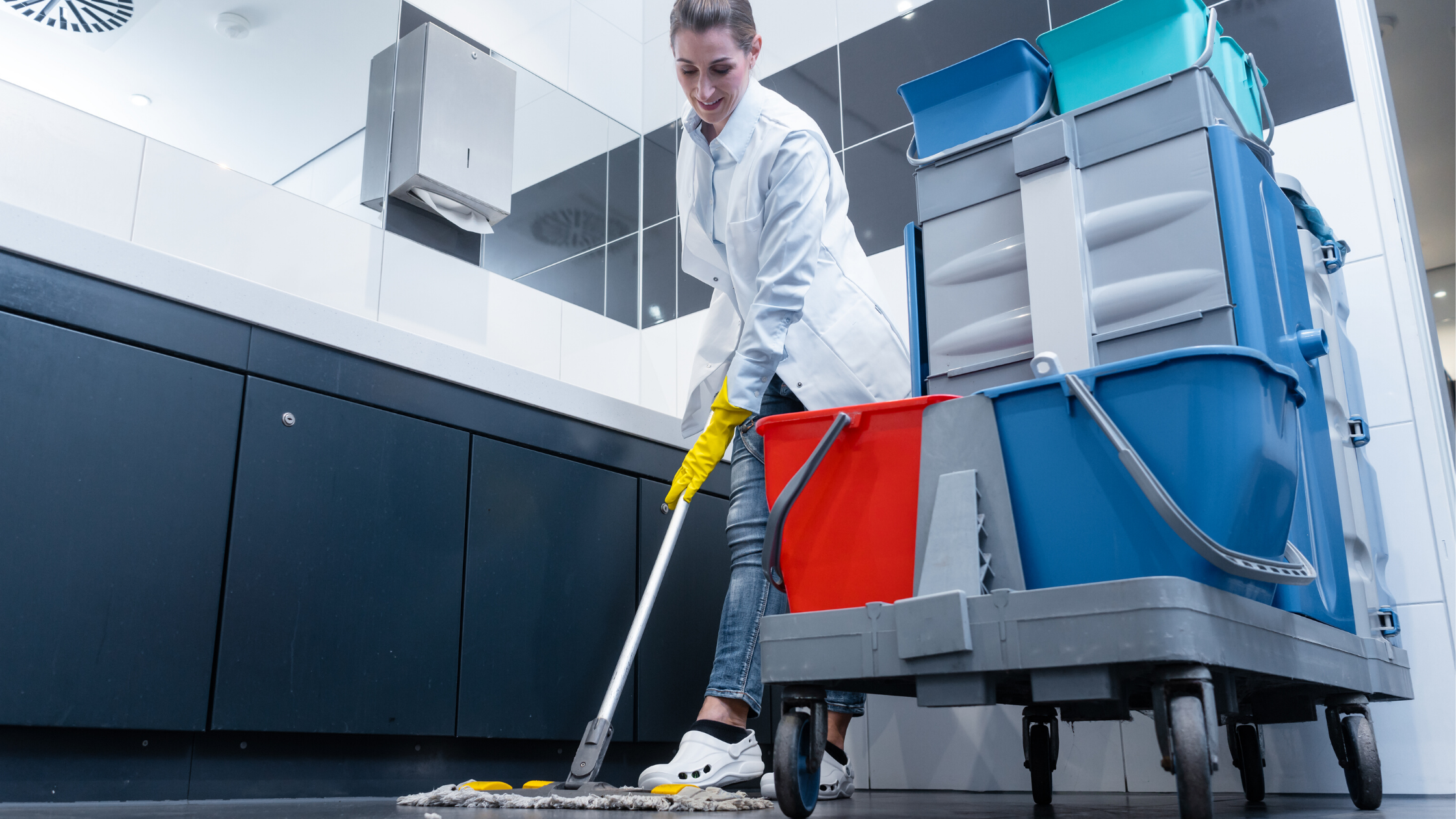 Employees and customers alike are focused on cleanliness and sanitation. In truth, though, the average office building does not receive a thorough cleaning often enough.
Employees and customers alike are focused on cleanliness and sanitation. In truth, though, the average office building does not receive a thorough cleaning often enough.
Many offices are cleaned piecemeal, with areas receiving some quick “maintenance” cleaning only when they are clear of employees. While dedicated custodial staff may be responsible for much of this, part of the day to day burden falls on office workers as well.
A thorough annual cleaning is on the schedule in many larger office complexes but usually takes place only when holidays enable cleaning crews to be on-site multiple days at a time.
In fact, most companies don’t have a sufficient cleaning schedule. The larger an office’s footprint, the more cleaning should take place. Likewise, as public perceptions around cleaning change, it is important that your building’s maintenance schedule changes with them.
How Often Should the Office Be Cleaned?
An end-to-end cleaning of any office property should take place twice a year. Try to time it for maximum impact: For example, at the beginning of the year and again at the start of the third quarter. Don’t wait longer than about six months for a complete cleaning!
Between major cleaning campaigns, it’s vital to be sure individual elements of your building are getting the right care. Some surfaces and facilities are more likely to foster the transmission of bacteria than others. Likewise, some have a greater effect on the perception of your business.
With that in mind, be sure your cleaning crew is doing things the smart way:
1. Restrooms
Not surprisingly, restrooms should be cleaned every day – ideally, public-facing restrooms that see daily use would be cleaned multiple times daily. Low-volume employee-only restrooms are easier to keep clean, but only if everyone does their part. While sinks and toilets are the major concerns here, walls, counters, and mirrors should also be thoroughly cleaned.
2. Break Rooms and Kitchens
Most businesses are moving toward less permissive policies when it comes to foodservice. It’s a good idea to replace food with single-serve items that are easier to clean up. Countertops are the biggest concern but don’t forget about door handles, faucets, and appliances. Surfaces should be wiped down and disinfected daily, as should the interior of the microwave.
3. Reception and Other Customer-Facing Areas
While it was once sufficient to clean lobbies every few days, customers are taking a much more discerning tack now. It’s a good idea to integrate some cleaning tasks into a daily routine. While dusting and vacuuming can wait a few days, wiping down high-contact surfaces is essential. Also, be sure you are stocked up on any wipes or other items you are offering the public.
4. Employee Desks and Work Areas
Many employee work areas are now less densely packed with furniture. Reduced seating means it is much easier to keep work surfaces clean. Professional cleaners have the experience needed to scour and disinfect common high-touch items like computer keyboards, phone headsets, and mice without damaging them. Trash receptacles, where still present, should be emptied.
5. Windows
Windowsills can be dusted once a week, but windows should be checked daily to make sure they are clean. Fingerprints and smudges stand out easily on most office windows, so spot cleaning must be done regularly. If you have lots of larger windows, consider using a professional window cleaning service. Windows facing trees or a busy street may need quarterly cleaning.
6. Floors
Carpets should be vacuumed nightly to prevent the build-up of dust and other respiratory irritants. These can reduce indoor air quality and cause long-term problems for your employees. A full cleaning can be done weekly on Friday, with deep cleaning scheduled twice a year.
Hardwood, laminate, tile, and linoleum floors are relatively easy to clean and disinfect. They should be mopped weekly on Friday so they can dry fully over the weekend. Dust mopping on a daily basis is recommended, especially in high-traffic areas such as break rooms.
Your Coatings Strategy Can Help You Keep Your Building Clean
A rigorous and consistent cleaning schedule is the most crucial active measure you can take to keep your building clean. But don’t forget that your coatings also have a big role to play.
Coatings can confer waterproofing, anti-rusting, and many other protections to your environment. This helps safeguard you against mold, mildew, and other environmental hazards.
In particular, consider the use of microbicidal coatings for all of your interior surfaces. Paint Shield by Sherwin-Williams can eliminate up to 99.9% of common bacteria. The ingredients in Paint Shield actively destroy bacteria so the environment is easier to disinfect.
A commitment to a clean work environment keeps your visitors safe and your employees doing their best work. Combining cleaning with professional coatings and strong maintenance, you can protect your people and your investments with a well devised plan.






